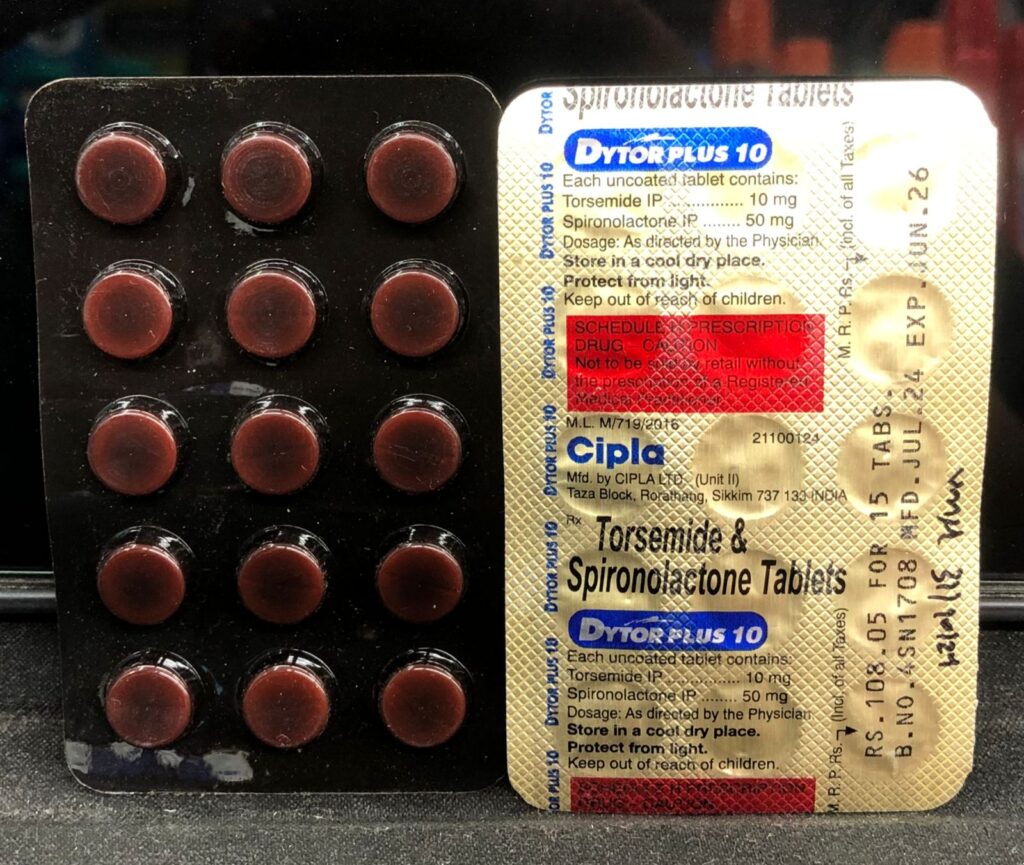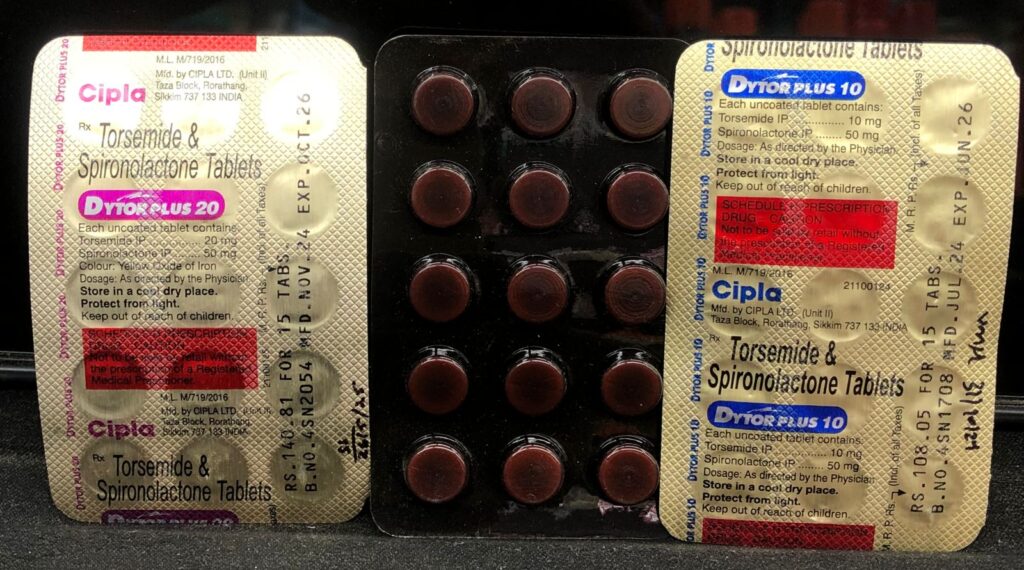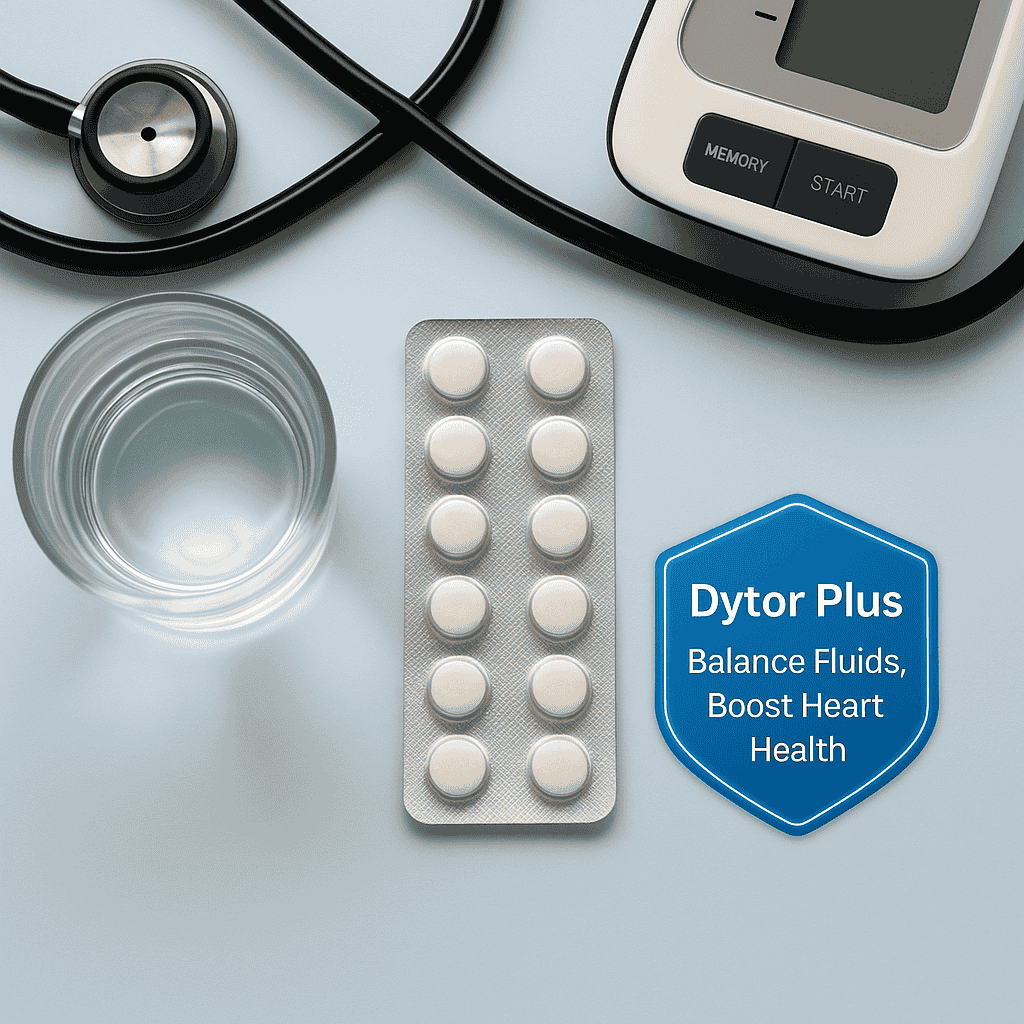If you’re dealing with conditions like heart failure, kidney problems, or fluid retention (edema), your doctor may prescribe Dytor Plus. This effective dual-action medicine works by flushing out excess fluid and sodium from the body, helping to alleviate bloating and support better blood pressure regulation.
But what exactly is Dytor-Plus Tablet? How does it work? Let’s break it down in simple terms.

Table of Contents
Dytor Plus: Uses, Works, Benefits, Side Effects & Substitutes, FAQs and more
What is Dytor Plus?
It is a prescription medication that combines two diuretics:
- Torasemide: A loop diuretic that removes excess salt and water by acting on the kidneys.
- Spironolactone: A potassium-sparing diuretic that helps prevent the loss of potassium while removing excess fluid.
Together, they offer a balanced effect: Torasemide removes fluid effectively, and Spironolactone ensures potassium levels don’t drop too low.
Uses of Dytor Plus
It is mainly prescribed for:
- Swelling due to fluid buildup in the body, often resulting from conditions like heart failure, liver disease, or kidney problems
- High blood pressure (hypertension), particularly when other medications aren’t enough
Congestive heart failure, to reduce symptoms like breathlessness and swelling
How Does Dytor Plus Work?
- Torasemide flushes out sodium and water through urine, reducing the volume of fluid in the body.
- Spironolactone helps by inhibiting aldosterone, a hormone that tells the body to retain sodium and fluid. This also helps prevent potassium loss.
The combination reduces swelling, lowers blood pressure, and eases the heart’s workload

How to Use and Dosage
- It’s typically taken once a day, ideally in the morning, to help minimize nighttime bathroom visits.
- Avoid missing doses or stopping the medication suddenly without your doctor’s guidance.
- Take it with or without food, but stay well-hydrated unless told otherwise.
Side Effects of Dytor plus
Like any medicine, it can have side effects, though not everyone experiences them:
Common:
- Increased urination
- Dizziness or lightheadedness (especially when standing up)
- Fatigue
- Muscle cramps
Serious (seek immediate care):
- Irregular heartbeat
- Severe dehydration
- Confusion
- Significant drop in blood pressure
Regular monitoring of electrolytes and kidney function is essential during long-term use
Note: Here you can get all information about the Enterogermina Liquid
Who Should Avoid Dytor-Plus?
Tablet Dytor-Plus may not be suitable for:
- Women who are pregnant or nursing should use this only if specifically recommended by their healthcare provider
- People with severe kidney dysfunction
- Patients with high potassium levels
Those with known allergies to either component
Substitutes for Dytor Plus
If it is unavailable or causes side effects, doctors may recommend alternatives such as:
- Lasix + Aldactone (Furosemide + Spironolactone)
- Torasemide alone (Dytor)
- Spironolactone alone (Aldactone)
- Amifru (Furosemide + Amiloride)
- Repace H (for hypertension with fluid retention)
Always consult your doctor before switching to a new medication.

Frequently Asked Questions
Q1: Can I take Dytor-Plus on an empty stomach?
Q2: How long does Dytor Plus take to show results?
Q3: Is Dytor Plus safe for long-term use?
Q4: Can I take Dytor Plus while consuming Alcohol?
Q5: What should I do if I forget to take a dose?
Dytor Plus is a smart combination diuretic that offers effective relief from fluid overload and supports blood pressure control. With the right dosage, monitoring, and medical supervision, it can make a big difference in managing chronic heart or kidney-related conditions. If you’ve been prescribed this medication, make sure to follow your doctor’s advice closely and stay hydrated. And remember — never self-medicate with diuretics, as they can affect electrolyte balance and kidney health.










